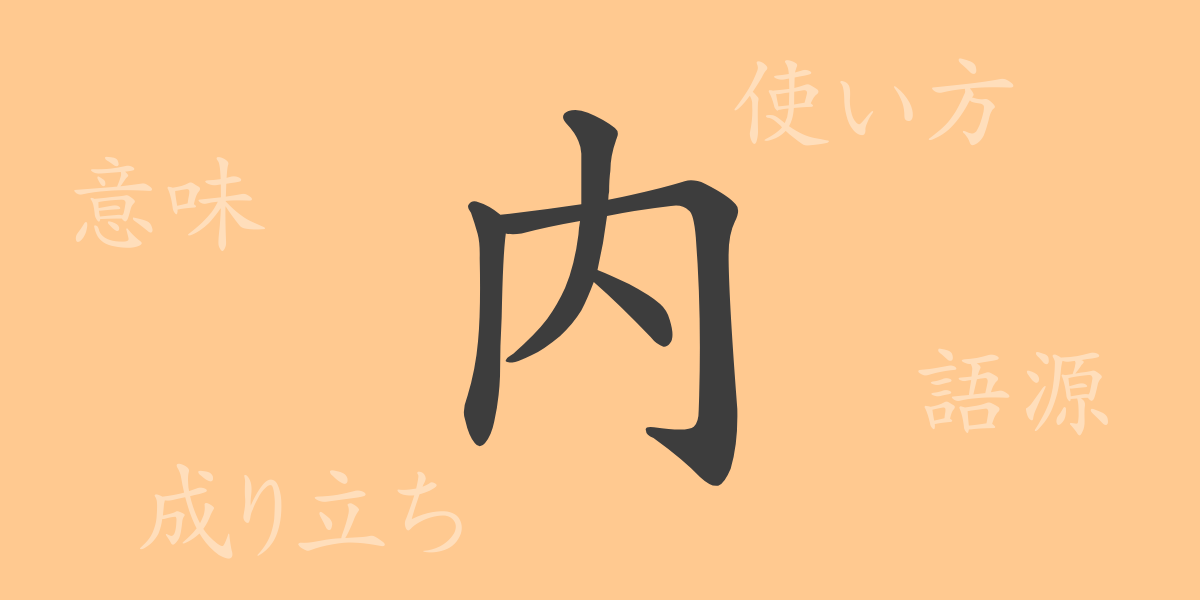In Japanese written language, Kanji is known for its complexity and beauty, reflecting the depth of Japanese culture and language. One such Kanji, ‘内 (うち)’, while simple, harbors a rich array of meanings and is widely used in daily life and expression by the Japanese. This article explores the origins, meanings, and uses of the Kanji ‘内’, delving into its significance in Japanese language.
Origins of ‘内 (うち)’
The Kanji ‘内’ has its roots in ancient pictographs. Initially depicted as the interior of a house, it evolved to signify the inside of a person or an object. Over time, ‘内’ became a fundamental concept representing interiority and inner spaces across various cultures and languages, retaining its essential meanings in modern Japanese.
Meaning and Usage of ‘内 (うち)’
‘内’ fundamentally means ‘inside’, ‘within’, or ‘interior’. It can also metaphorically represent concepts such as ‘secrecy’ or ‘privacy’. Its usage varies from indicating physical locations to describing someone’s inner thoughts or feelings, with nuances that depend on the context.
Reading, Stroke Count, and Radical of ‘内 (うち)’
The Kanji ‘内’ is a basic element within the Japanese language, and understanding its readings and structure is vital for learning Japanese.
- Readings: On’yomi ‘ナイ’, Kun’yomi ‘うち’
- Stroke Count: ‘内’ consists of 4 strokes.
- Radical: Its radical is ‘入 (にゅうい)’, related to entering or inside.
Phrases, Idioms, and Proverbs Using ‘内 (うち)’
‘内’ is used in many idioms, phrases, and proverbs. For example, ‘内心 (ないしん)’ refers to one’s inner feelings, ‘内緒 (ないしょ)’ denotes a secret or something not to be disclosed. ‘内外 (ないがい)’ contrasts the domestic and foreign, often used in comparison. These expressions highlight the richness of the Japanese language, adding depth to communication.
Conclusion on ‘内 (うち)’
Though simple in form, the Kanji ‘内’ has a wide range of uses. It plays a significant role within the context of the Japanese language, deeply ingrained in the ways Japanese people think and express themselves. Understanding the meanings and applications of this character is indispensable for deepening one’s grasp of Japanese.

























